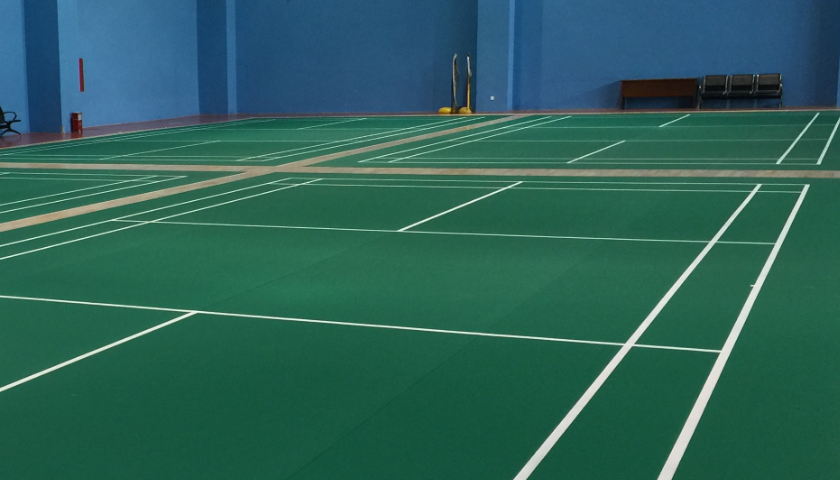In addition to achieving a streamlined decorative art effect, the badminton hall should also consider the utilization rate of boards. Professional sports wood floors are recommended here, and now we will introduce them specifically.

Preparations before construction and pavement of badminton hall. The construction site, ground, wall and wall base must be clean, dry and flat. Before installation, anti-seepage inspection shall be carried out, including the inspection of embedded lines and pipes, and whether the kitchen and bathroom leak. Ground installation must be completed before other decoration works are completed. Set a time before construction, unpack the package and put it indoors. The land can adapt to changes in ambient temperature and humidity. In order to avoid direct sunlight and floor moisture, the installation of doors and windows must meet certain requirements.
Construction of badminton hall Procedures and plans need to be developed before. The setting out of buildings on the ground, such as badminton hall, is square on four sides, and the side wall can be used as the benchmark. If the four sides are not completely rectangular, take the center cross line of the site as the benchmark and then divide the line evenly. It is convenient to install the floor, and the seam is even. If it is uneven, it can be adjusted directly. The ground is covered with damp proof film. The surface of the plastic moisturizing film is smooth downward without damage. The gaps of the anti tide film shall be overlapped, bonded with adhesive tape, and paved on the corners of the surrounding walls for a few centimeters to completely prevent the formation moisture from overflowing.
The distance between keels shall be determined according to the laying length of keels for badminton hall construction. The keel must be fixed firmly and smoothly, and the moisture content should meet the requirements of laying the ground. Determine whether to lay multilayer plates according to the actual needs of keel laying. If it is necessary to lay multilayer plates, fix them on a layer of damp proof film and fix them with pins. In addition, expansion joints shall be left on each plywood joint. Expansion joints are also reserved between the four plywood to prevent dry shrinkage and expansion. Cover the second layer of moisture-proof film on the plywood to separate the water and gas in the bottom layer including the plywood.

